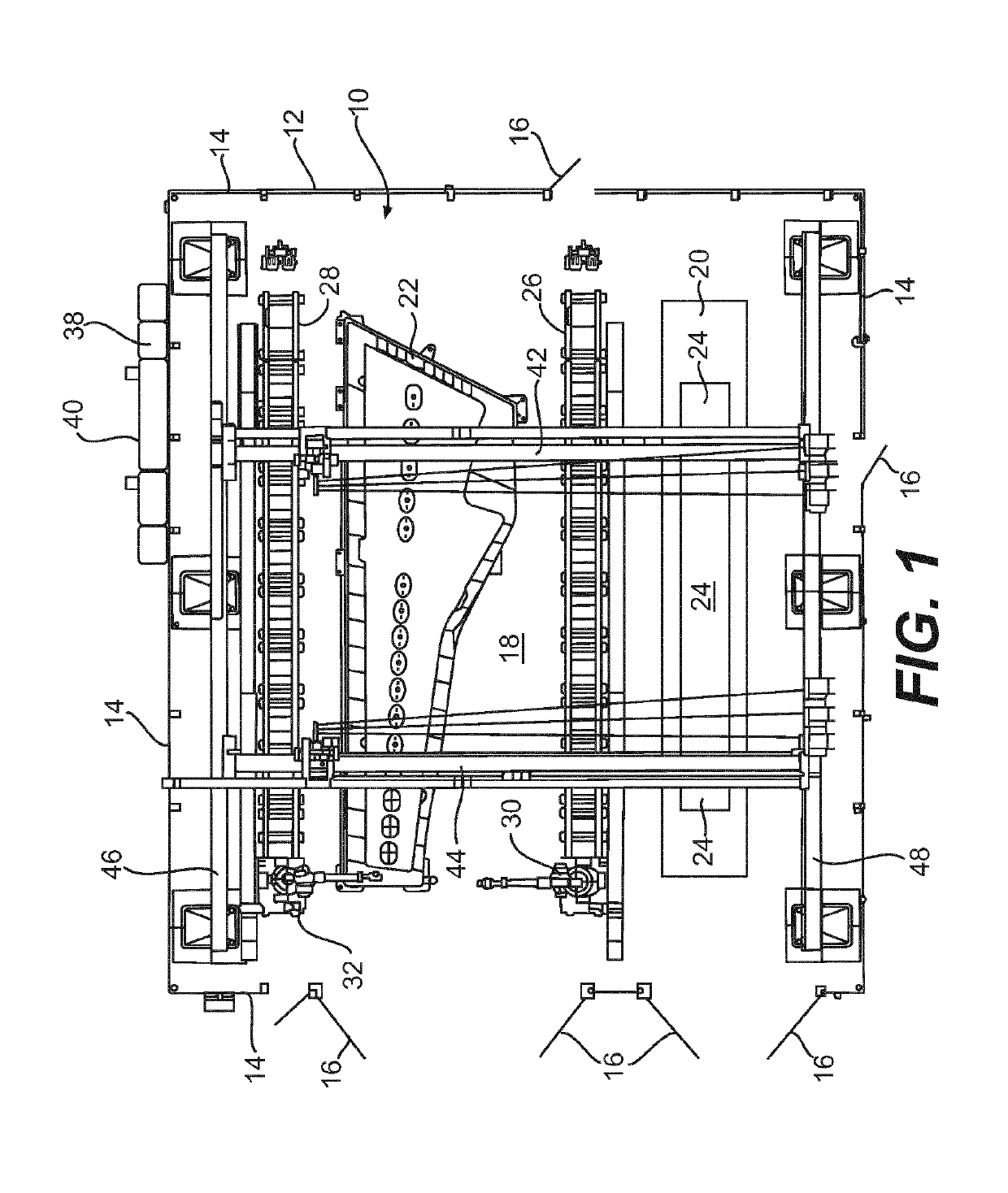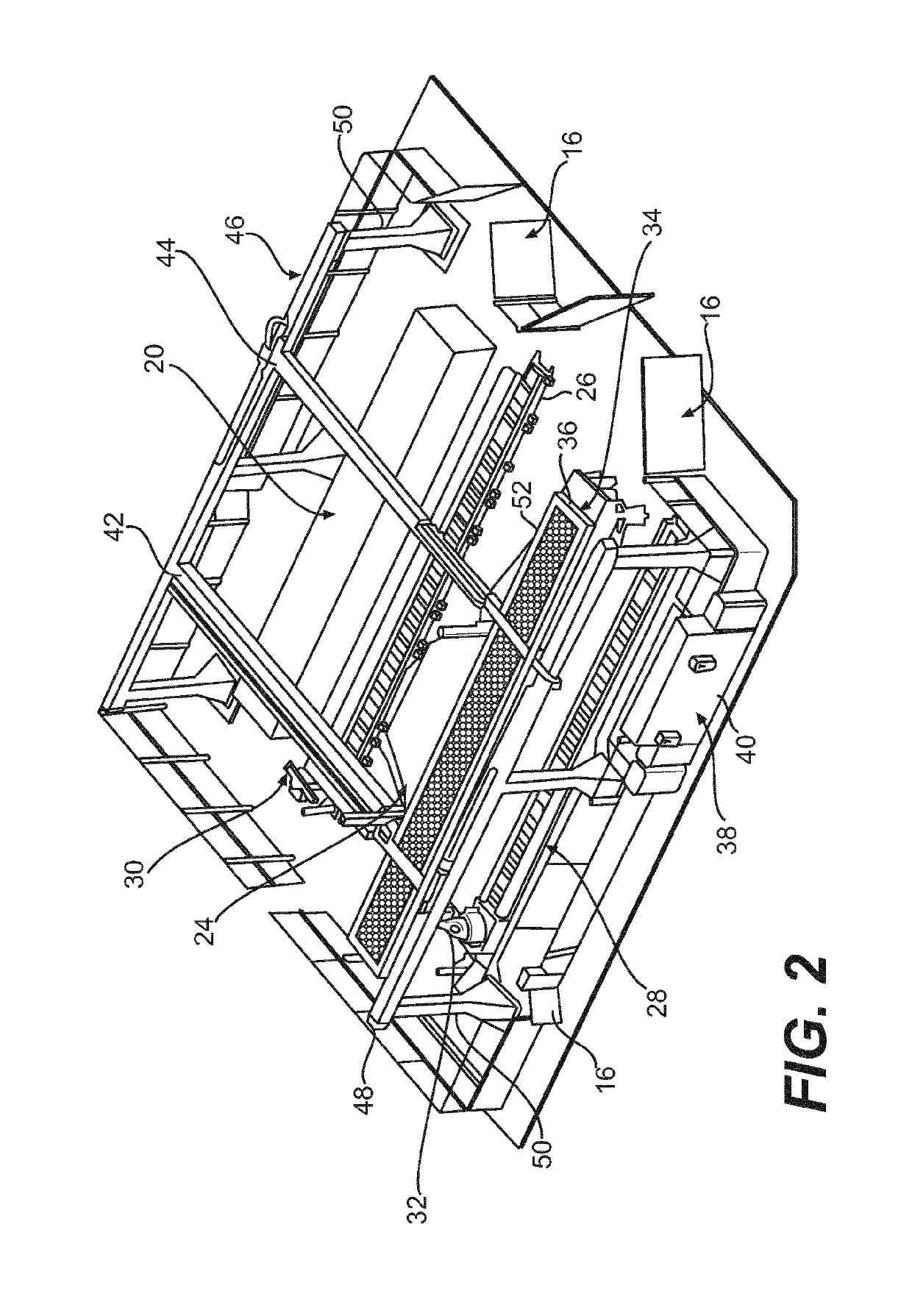Fabric handling apparatus
a technology of material handling and material handling, which is applied in the field of construction and can solve the problems of lack of precise reproducibility, prone to errors in manual processes, and difficulty in ensuring the quality of materials, and achieves the effect of constant position relationship
- Summary
- Abstract
- Description
- Claims
- Application Information
AI Technical Summary
Benefits of technology
Problems solved by technology
Method used
Image
Examples
Embodiment Construction
[0074]The present invention will now be described in connection with one or more embodiments. Discussion of any one particular embodiment is intended to be illustrative of the breadth and scope of the invention. In other words, while attention is focused on specific embodiments, those embodiments are not intended to be limiting of the scope of the present invention. To the contrary, after appreciating the discussion and drawings presented herein, those skilled in the art will readily appreciate one or more variations and equivalents of the embodiments described and illustrated. Those variations and equivalents are intended to be encompassed by the present invention as though they were described herein.
[0075]The modern manufacture of aircraft has recently departed from traditional reliance upon aluminum and aluminum alloys for the external components of the aircraft and moved to a greater reliance on composite materials. It is anticipated that future aircraft will rely even more heav...
PUM
| Property | Measurement | Unit |
|---|---|---|
| distance | aaaaa | aaaaa |
| shape | aaaaa | aaaaa |
| displacement | aaaaa | aaaaa |
Abstract
Description
Claims
Application Information
 Login to View More
Login to View More - R&D
- Intellectual Property
- Life Sciences
- Materials
- Tech Scout
- Unparalleled Data Quality
- Higher Quality Content
- 60% Fewer Hallucinations
Browse by: Latest US Patents, China's latest patents, Technical Efficacy Thesaurus, Application Domain, Technology Topic, Popular Technical Reports.
© 2025 PatSnap. All rights reserved.Legal|Privacy policy|Modern Slavery Act Transparency Statement|Sitemap|About US| Contact US: help@patsnap.com



